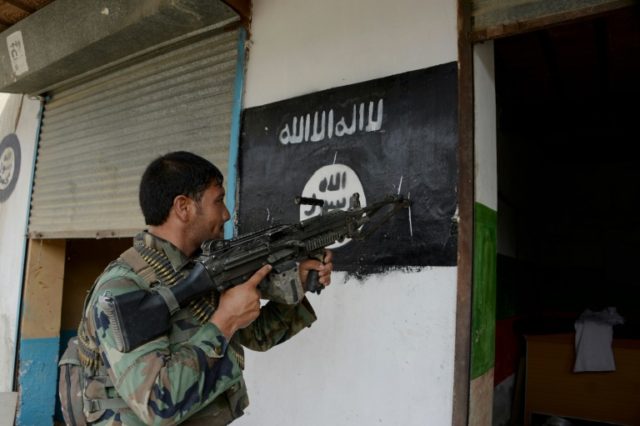The Islamic State (ISIS/ISIL) branch in Afghanistan has “grown stronger” over the last few years despite the record number of ongoing U.S.-NATO-led coalition airstrikes launched against the group, the Washington Examiner reported in the last few days, citing the U.S. Department of State (DOS).
“ISIS has grown stronger over the last couple of years, despite a really withering military campaign, principally from U.S. forces, but with strong support as well from Afghan forces,” a DOS official told the Examiner on condition of anonymity.
The U.S. military shifted its focus to intensifying airstrikes against ISIS while trying to bring the Taliban to the negotiation table, where they temporarily suspended airstrikes against the Taliban.
Despite ongoing attacks by the Taliban, the official, echoing some U.S. lawmakers, expressed optimism that some Taliban leaders and fighters are interested in ending the nearly 17-year-old war.
“Number one, the Taliban has a lot of command and control because when the order went out for the Taliban to respect the cease-fire, they respected the cease-fire,” a State Department official told the Washington Examiner. “Number two, as strong as that command-and-control may be, it’s clear among the Taliban rank-and-file, there is a lot of interest in being Afghan, in celebrating Afghan cultural and religious practices, and seeing an end to [the] war.”
Islamic State (ISIS/ISIL) did not hesitate to flex its muscle as the Afghan forces and the Taliban celebrated together, launching attacks against both groups that killed and wounded scores of people. The truce did not cover ISIS fighters.
The State official’s comments about ISIS being stronger came about a couple of days after suspected ISIS jihadis decapitated three men and set a children’s school on fire in the eastern Afghan province of Nangarhar along the Pakistan border, a testament to the group’s ongoing menace. Nangarhar is considered an Islamic State stronghold.
“They brutally beheaded three attendants and set fire to the school building,” Mohammad Asif Shinwari, spokesman for the education department told Reuters.
Although no group has officially claimed responsibility for the attack, the Nangarhar provincial governor placed the blame for the horrific attack on ISIS.
“In a statement, the provincial governor blamed the incident on Islamic State, which has conducted a series of brutal attacks in the province and other areas, regularly beheading victims they accuse of cooperating with the government,” Reuters acknowledges.
For months, the U.S. has been unable to push ISIS out of the top opium-producing region of Nangarhar, a province in Eastern Afghanistan that borders Pakistan.
Sen. Joni Ernst (R-Iowa), the chairwoman of a top Senate armed services panel, echoing other experts, suggested that opium serves as a lucrative funding source for the ISIS-Afghanistan branch as it does for the Taliban.
“I haven’t necessarily heard that they’re getting stronger, but we know that ISIS is a problem in Afghanistan. And we do have to be able to cut out their revenue streams. So, illicit drugs, wherever they’re being funded from, we have to cut that out; but then we have to eliminate them as well,” the senator declared.
In 2017, the output value of the opium and its heroin derivative exceeded $6 billion. The Taliban already generates more than 60 percent of its funding from opium and heroin produced in Afghanistan, the world’s top supplier of the deadly drugs.
Courtesy of authority by U.S. President Donald Trump, the U.S. military has been targeting heroin and opium labs linked to the Taliban across the country.

COMMENTS
Please let us know if you're having issues with commenting.